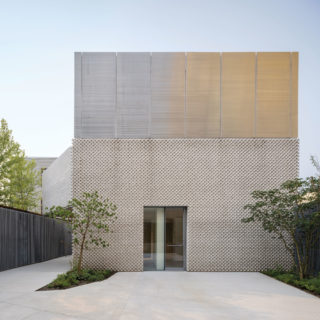New York City has built and preserved 165,590 affordable housing units since 2014, and yet it is much more expensive to live here than ever before. How and why is this happening?
It is because 79% of the “affordable housing” that has been built has been packaged with luxury housing—the very thing that drives up the cost of living in the first place. The program, called Mandatory Inclusionary Housing (MIH), is a public-private partnership with developers who agree to build 25% to 30% of a development as affordable housing units in an otherwise market-rate development, in exchange for a density bonus and tax credits via the 421-a tax program. While MIH does create affordable apartments, it’s all about the ratio. In the same way that a juice drink can seem healthy, it depends on the nutrition facts or the percentage of juice vs. sugar. Since affordable apartments make up only 25% to 30% of these developments, it’s like having 25% juice and 75% sugar water blended together—i.e., it’s not a good package. This is compounded by the fact that the rents for affordable apartments vary and can be up to 130% of Area Median Income, which means that to qualify for many of these “affordable” apartments, you’d need to make over $100,000 annually, which for many New Yorkers is not actually affordable.
While politicians claim they’re creating thousands of “affordable units” to mitigate our housing shortage, they’re not only driving up the market-rate units across our city, the tax abatements, as part of the 421-a program that works alongside MIH, are essentially subsidizing the developer. The city spends $1.7 billion annually on the 421-a tax credits, so the developer does not pay taxes for the first 25 years of the project, and a percentage of taxes for an additional 10 years. In total, the city ends up paying about $1 million per affordable apartment. All in all, it’s not a good package and it’s not a good deal for our city.
The current 421-a program sunsets in the summer of 2022, and numerous developers have said there would be no rental developments built today without the 421-a. In other words, if these billionaire developers had to pay taxes (like everyone else), they couldn’t afford to construct these buildings at all. Really? Or is it that the city is subsidizing developers so they are bidding up land values, meaning that our affordable housing policies are actually raising the cost of living?
If it seems a little bit backwards, why are MIH and 421-a such popular programs? By creating MIH developments, politicians succeed in stimulating the real estate market and local economy while meeting their “affordable housing” goals. Essentially, they’re having their cake and eating it, too, while serving us a sugary, watered-down health drink. To be fair, in theory, increasing supply should lower prices (an argument developers make to support their plans), but that’s assuming you have a closed system. In this instance, most newly built apartments are filled with folks from other neighborhoods, so the shiny new development drives demand into the neighborhood more than it increases supply. The other point to consider is that housing is a need, not a want. The dynamics are different from, say, a milkshake, where at a certain price you decide you don’t want to spend the money or consume the calories. We have seen over the past 30 years that as housing costs increase, so does the percentage of income that people spend on them. We pay these rents, even if they’re more expensive, because we have to live somewhere.
Is it possible for MIH to work? Like nutrition facts, it all depends on the ingredients. For example, last September, the River Ring rezoning proposal by Two Trees Management on the Williamsburg Waterfront at 87-105 River Street was approved by Community Board 1, with the suggested condition that the developer double the percentage of affordable housing from 25% to 50%. If the city agrees to 50%, we would finally get to a healthy level where the development would house more families than it displaces by raising rents. If we continue to build affordable housing through MIH/421-a, then we must push for 50% affordable housing.
However, is the current MIH/421-a package the only way to create affordable housing? No, it’s just the only option on the table. The post-COVID reality is that the wealth gap is larger than ever, and as rents and land values rise, the homeowner and renter are further divided. It becomes impossible for lower-income families to ever build equity and get out of an endless cycle of increasing monthly payments. In the 1950s, our city created Mitchell-Lama and Housing Development Fund Corporations, which financed lower-cost cooperative buildings where working-class families could build equity and community. Our city is at a turning point with COVID, changing the way we live and work, and opening up an opportunity to repurpose office buildings and hotels into affordable homes. If we truly care about affordable housing, we need to start by creating sustainable affordable housing that addresses the wealth gap by allowing owners to build equity, ensuring long-term housing security, and planning developments that don’t have a market-rate component, further exacerbating the problem we’re trying to solve.
The 421-a program sunsets next summer and, at $1.7 billion per year, it leaves us a nice fund that our city could reallocate to long-term affordable housing. At the center of the wealth gap is the landlord-tenant relationship. We need to focus on affordable homeownership if we are ever to break this cycle and raise the tide for all.
Cory Kantin is a founder of the community group Sustainable Williamsburg and a 13-year Brooklyn resident and activist with a background in real estate.















